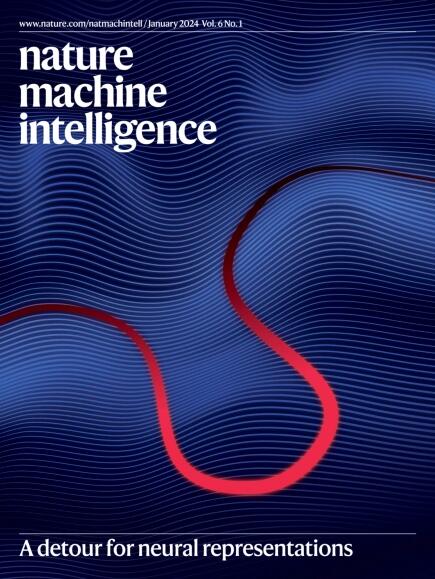Transformers and genome language models
IF 23.9
1区 计算机科学
Q1 COMPUTER SCIENCE, ARTIFICIAL INTELLIGENCE
引用次数: 0
Abstract
Large language models based on the transformer deep learning architecture have revolutionized natural language processing. Motivated by the analogy between human language and the genome’s biological code, researchers have begun to develop genome language models (gLMs) based on transformers and related architectures. This Review explores the use of transformers and language models in genomics. We survey open questions in genomics amenable to the use of gLMs, and motivate the use of gLMs and the transformer architecture for these problems. We discuss the potential of gLMs for modelling the genome using unsupervised pretraining tasks, specifically focusing on the power of zero- and few-shot learning. We explore the strengths and limitations of the transformer architecture, as well as the strengths and limitations of current gLMs more broadly. Additionally, we contemplate the future of genomic modelling beyond the transformer architecture, based on current trends in research. This Review serves as a guide for computational biologists and computer scientists interested in transformers and language models for genomic data. Micaela Consens et al. discuss and review the recent rise of transformer-based and large language models in genomics. They also highlight promising directions for genome language models beyond the transformer architecture.


变形金刚和基因组语言模型
基于transformer深度学习架构的大型语言模型彻底改变了自然语言处理。受人类语言与基因组生物密码相似性的启发,研究人员开始开发基于变形器和相关架构的基因组语言模型(gLMs)。这篇综述探讨了变形器和语言模型在基因组学中的应用。我们调查了基因组学中适合使用glm的开放问题,并激励使用glm和转换器架构来解决这些问题。我们讨论了glm在使用无监督预训练任务建模基因组方面的潜力,特别关注零次和少次学习的能力。我们将更广泛地探讨变压器架构的优势和局限性,以及当前glm的优势和局限性。此外,基于目前的研究趋势,我们考虑了变压器架构之外的基因组建模的未来。本综述可作为对基因组数据的转换和语言模型感兴趣的计算生物学家和计算机科学家的指南。
本文章由计算机程序翻译,如有差异,请以英文原文为准。
求助全文
约1分钟内获得全文
求助全文
来源期刊

Nature Machine Intelligence
Multiple-
CiteScore
36.90
自引率
2.10%
发文量
127
期刊介绍:
Nature Machine Intelligence is a distinguished publication that presents original research and reviews on various topics in machine learning, robotics, and AI. Our focus extends beyond these fields, exploring their profound impact on other scientific disciplines, as well as societal and industrial aspects. We recognize limitless possibilities wherein machine intelligence can augment human capabilities and knowledge in domains like scientific exploration, healthcare, medical diagnostics, and the creation of safe and sustainable cities, transportation, and agriculture. Simultaneously, we acknowledge the emergence of ethical, social, and legal concerns due to the rapid pace of advancements.
To foster interdisciplinary discussions on these far-reaching implications, Nature Machine Intelligence serves as a platform for dialogue facilitated through Comments, News Features, News & Views articles, and Correspondence. Our goal is to encourage a comprehensive examination of these subjects.
Similar to all Nature-branded journals, Nature Machine Intelligence operates under the guidance of a team of skilled editors. We adhere to a fair and rigorous peer-review process, ensuring high standards of copy-editing and production, swift publication, and editorial independence.
 求助内容:
求助内容: 应助结果提醒方式:
应助结果提醒方式:


